The Central Arctic Ocean
Our Collective Responsibility
The Central Arctic Ocean lies at the heart of the Arctic. Comprised of 1.1 million square miles of international waters around the North Pole, the Central Arctic Ocean was completely covered with a thick layer of multiyear sea ice through most of human history. But climate change is rapidly melting this sea ice, bringing a cascading series of changes to the Arctic and the globe that we have never faced before.
At the same time, this melting could also provide new access to industries for the first time including commercial fishing, industrial shipping, deep sea mining and more. As we learn more about the importance of the Central Arctic Ocean and how it is changing, we need to protect the Central Arctic Ocean and ensure industrial activities do not inflict irreversible harm.
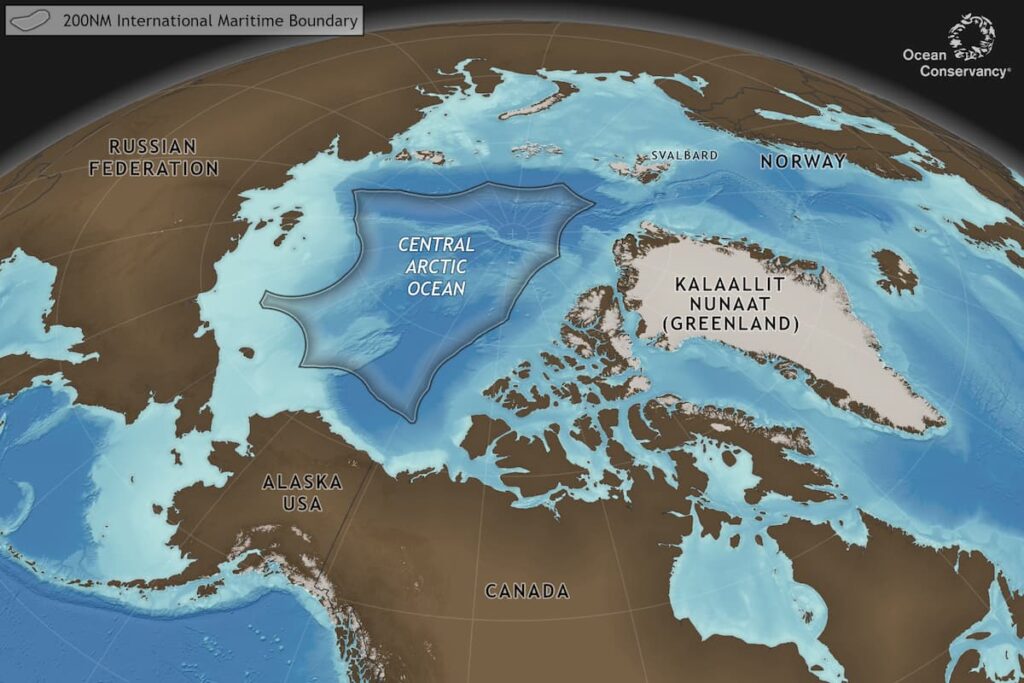
Importance of the Central Arctic Ocean
Dominated by sea ice, driven by seasonal changes of light and temperature, and fed by nutrients upwelling from the depths and carried by huge rivers, the Arctic Ocean produces astonishing marine productivity and diversity from plankton blooms on ice edges and algae growth under ice shelves.
At a time when noise is having increased impacts on marine life, the Central Arctic Ocean is currently the world’s quietest sea. It provides essential habitat for a wide variety of marine life. Fish, birds and mammals migrate annually to join year-round residents to feed on this biological wealth. Humans in the Arctic are part of this ecosystem, including Arctic Indigenous people living along the shores of coastal seas intimately connected to the Central Arctic Ocean.
Though remote, the Central Arctic Ocean is vital to the world. Water currents connect the Central Arctic Ocean to Arctic rivers, coastal seas, and the Atlantic and Pacific Oceans, helping drive global ocean circulation. Wind patterns make the Central Arctic Ocean an integral part of weather throughout the Northern Hemisphere. Arctic sea ice cools the planet and stabilizes the jet stream, which moderates extreme weather into temperate latitudes.
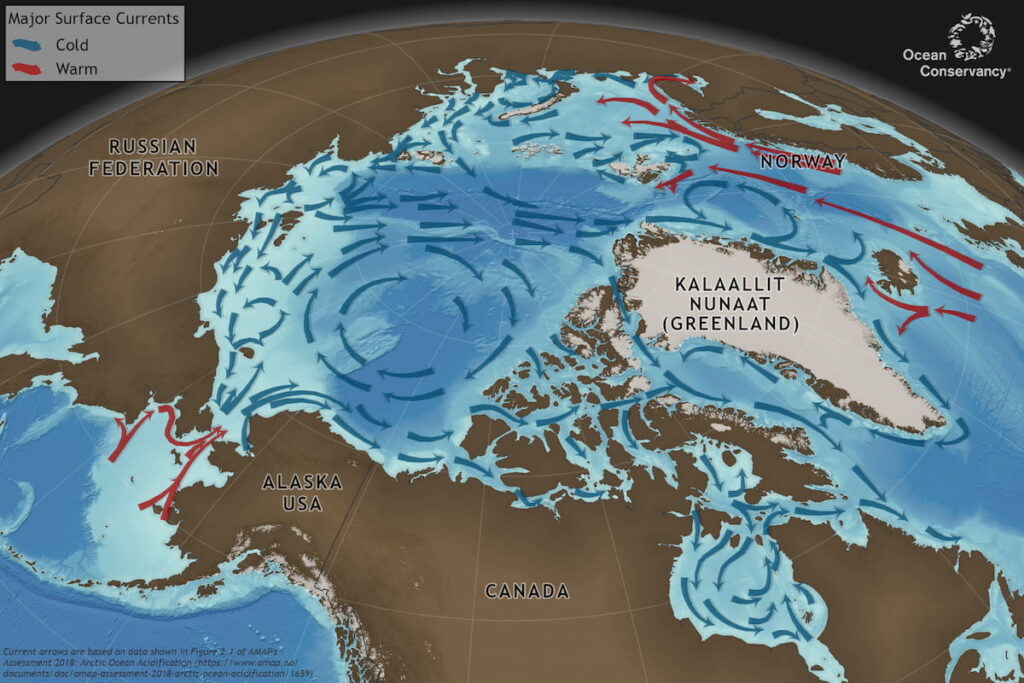
The Central Arctic Ocean is connected to the region by currents (shown here), wind, and weather patterns that help cool the planet.
Problems Facing the Central Arctic Ocean
Climate change
Climate change is hitting the Central Arctic Ocean hard, which is bad news for climate moderation. Industrial greenhouse gases trapped in the atmosphere have caused the Arctic to warm four times faster than the rest of the planet. This “Arctic amplification” is quickly melting sea ice in Arctic coastal seas and even the Central Arctic Ocean, which had previously been permanently ice covered throughout human history.
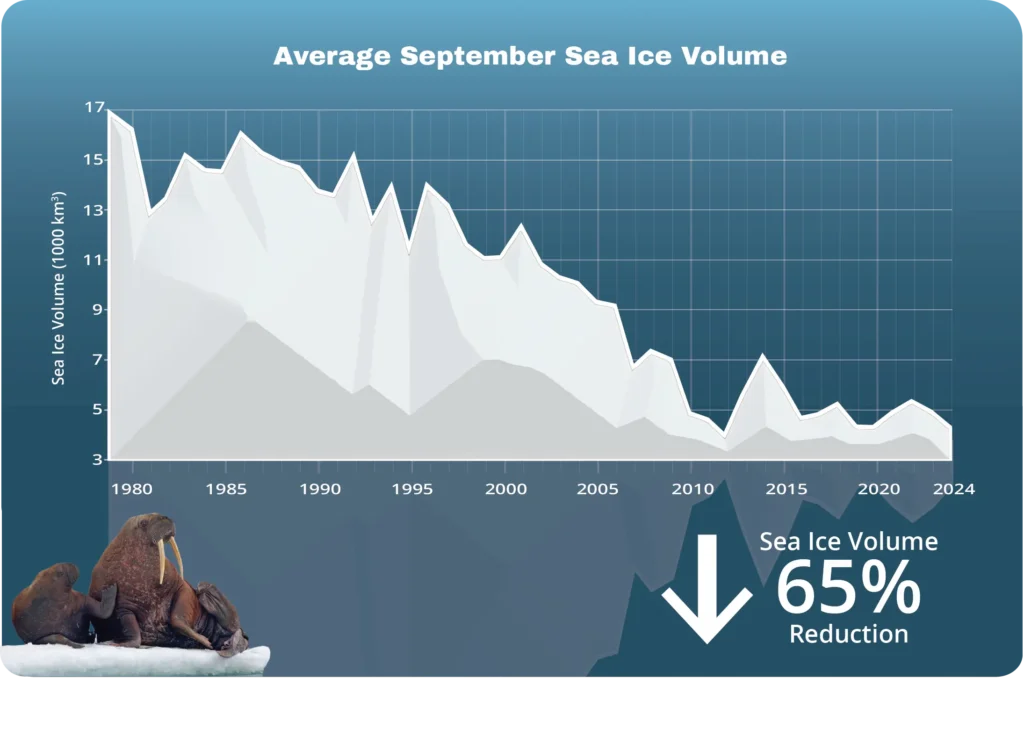
Effects from these changes are readily apparent to Arctic peoples and wildlife. In Arctic coastal seas, cascading changes to fish, seabird and marine mammal populations are disrupting ecosystems humans rely upon. Melting of sea ice that once protected coastlines from fall and winter windstorms has increased coastal erosion, threatening coastal communities.
Scientists are increasingly detecting even broader changes from loss of sea ice like greater heat being absorbed by the ocean and disruption of wind and ocean patterns that help regulate extreme weather in areas far away from the Arctic.
Industrial Threats
Already under threat from climate change, the Central Arctic Ocean faces additional industrial impacts. Arctic coastal states have asserted ownership of the seabed underlying the Central Arctic Ocean, which include the mineral rights for deep sea mining, an untried method of strip mining metals from sea floors, continental crusts and hydrothermal vents.
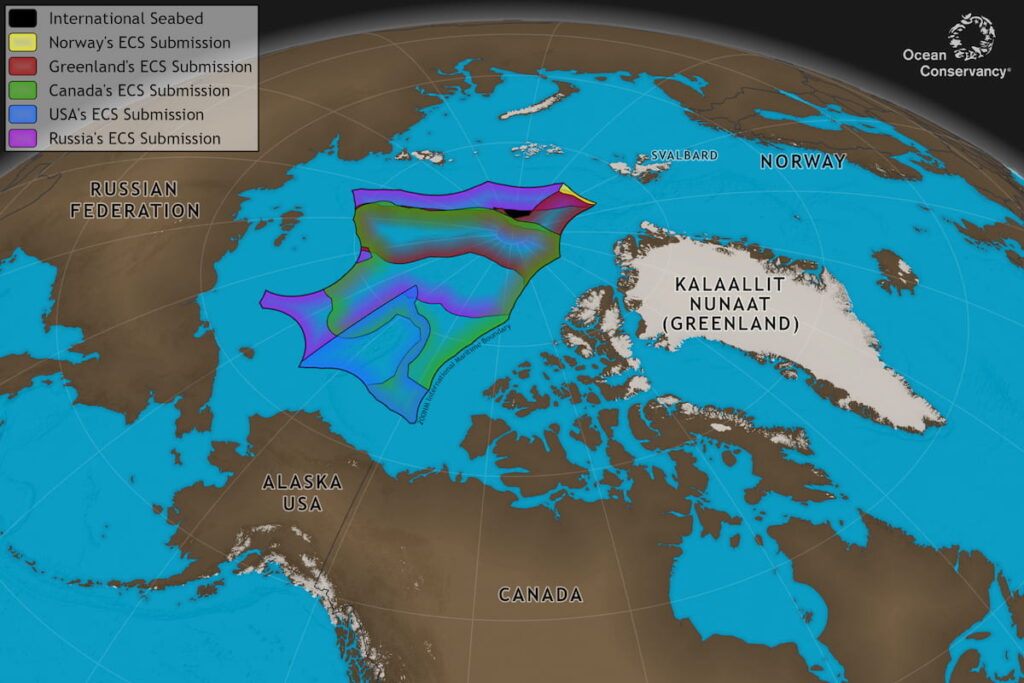
Likewise, the proposed Transpolar Shipping Route envisions using the Central Arctic Ocean as a shortcut for large vessels to connect non-Arctic manufactured goods, bulk materials, and oil and gas products to distant markets.
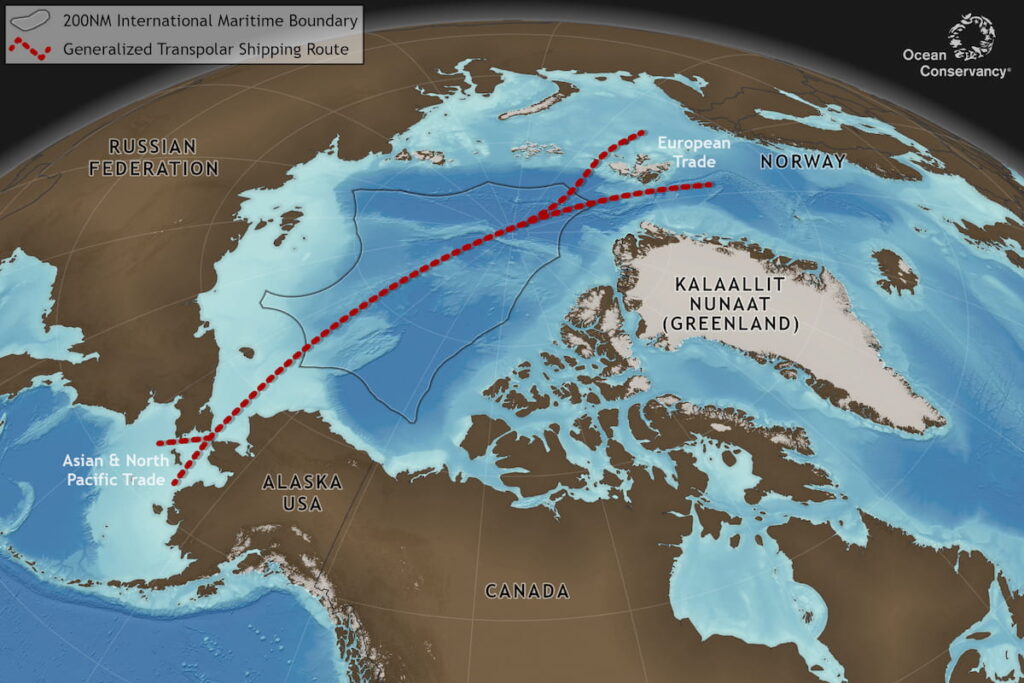
Both of these industries would impose huge new impacts on the Central Arctic Ocean including pollution, noise and direct disturbance of ecosystems. In the case of accidents or spills, the severe lack of search and rescue capabilities would put workers at risk and the paucity of clean-up capability in such remote waters mean currents could spread pollution across the top of the globe.
Commercial Fishing
When faced with a similar threat to the Central Arctic Ocean from the potential start of commercial fishing, the global community rallied to sign an international agreement in 2018, founded on the precautionary principle, to place a binding moratorium on high seas fishing in the Central Arctic Ocean, establish a multinational cooperative research program, recognize the special relationship Arctic Indigenous peoples have to the Arctic and ensure their active participation in implementation of the agreement. This ground-breaking agreement, the first of its kind in the world, came into effect in 2021, bringing Arctic and non-Arctic states together as partners to protect the Central Arctic Ocean and serving as a model for future action.
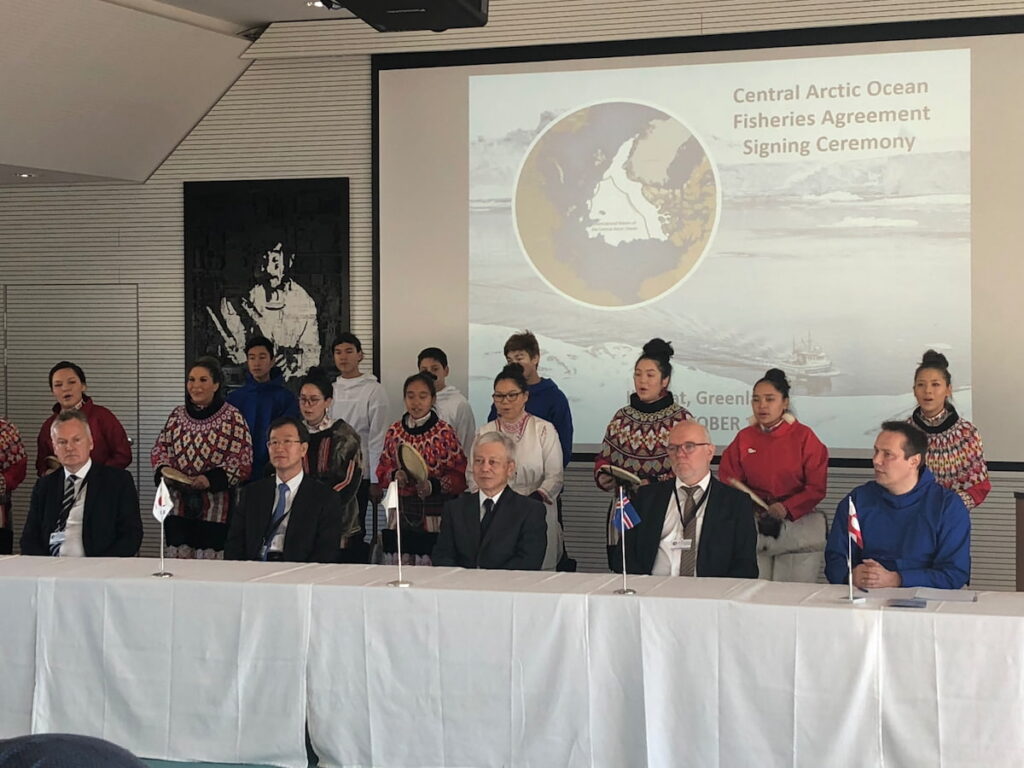
The Solution – What We’re Doing
The Central Arctic Ocean is a global treasure that requires international protection. Cooperation (not conflict) and precaution (not reckless industrial experiments) are required. Ocean Conservancy takes inspiration from the Central Arctic Ocean fisheries agreement and call on countries for a new Central Arctic Ocean agreement that:
- Recognizes the importance of the Central Arctic Ocean for Arctic peoples and its global climate services.
- Places a moratorium on new industries like deep sea mining and transpolar shipping in the Central Arctic Ocean.
- Promotes increased knowledge of the Central Arctic Ocean gathered from scientists and Indigenous knowledge holders.
- Establishes participation of Arctic Indigenous people in future decision-making about the Central Arctic Ocean.